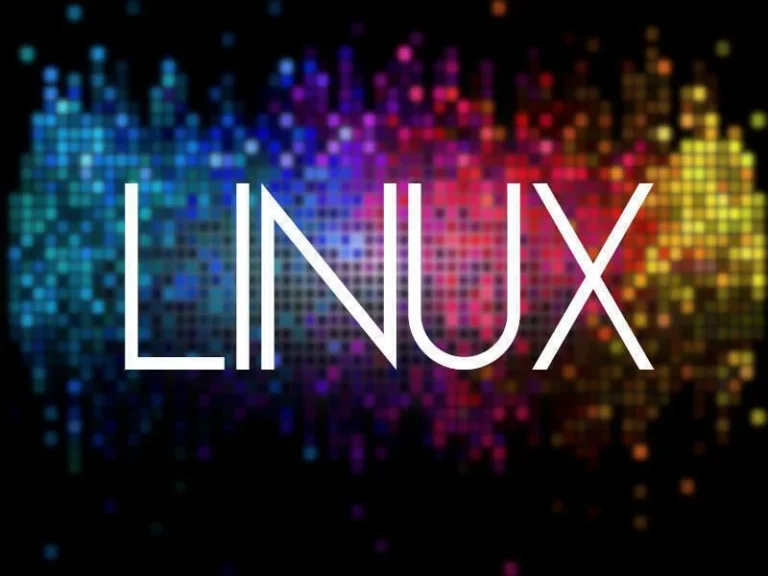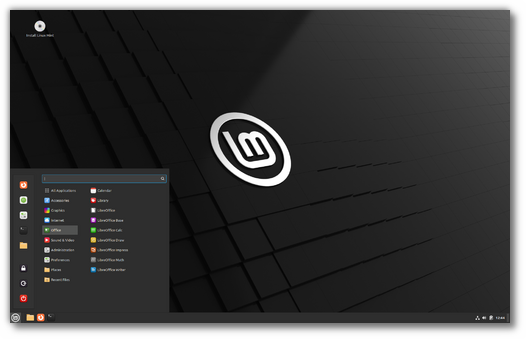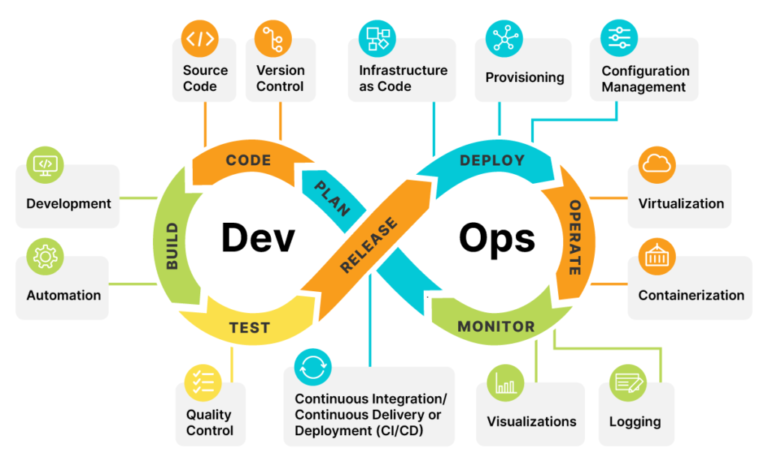CentOS Stream is an innovative project that offers a rolling-release Linux distribution with a closer alignment to Red Hat Enterprise Linux.
In this article, we will explore what CentOS Stream is, how it works, and why contributing to it can be beneficial.
We will also discuss the suitability of CentOS Stream for production environments, its stability, and its use cases.
We will delve into the migration process to CentOS Stream, compare it with Red Hat Enterprise Linux, and provide insights on how to choose between the two for your specific needs.
Key Takeaways:
- CentOS Stream is a community-supported, rolling-release Linux distribution that provides a stable and reliable platform for enterprise use.
- While CentOS Stream may not be suitable for all production environments, it is a valuable choice for organizations that want a balance of community-driven innovation and enterprise-grade stability.
- Migrating to CentOS Stream from CentOS Linux is a straightforward process, but it’s important to carefully consider the specific needs and requirements of your organization beforehand.
Overview of CentOS Stream
CentOS Stream is an innovative open-source platform developed by the CentOS Project, sponsored by Red Hat, designed to bridge the gap between community-driven CentOS Linux and commercially supported Red Hat Enterprise Linux (RHEL).
This continuous delivery platform provides users with a rolling-release model, ensuring they receive the latest updates, patches, and features rapidly. By fostering a symbiotic relationship between contributors, developers, and users, CentOS Stream promotes a collaborative environment for software development. Through this model, migration between CentOS Stream and RHEL becomes seamless, allowing organizations to leverage the stability of RHEL while benefiting from the fresh technology stack of CentOS Stream. This integration not only streamlines the update process but also enhances the overall user experience by aligning it with industry-leading practices.
What is CentOS Stream?
CentOS Stream, powered by Red Hat, represents a dynamic environment for continuous innovation, providing a seamless experience for developers and users to access cutting-edge open-source solutions.
With a focus on stability and compatibility, CentOS Stream serves as a middle ground between the cutting-edge Fedora Linux and the enterprise-focused Red Hat Enterprise Linux. It offers a predictable release schedule, allowing users to test features and improvements before they make their way into the stable Red Hat Enterprise Linux releases. The collaborative environment of CentOS Stream encourages community participation, ensuring that the development ecosystem remains vibrant and responsive to user needs. CentOS Stream also offers certification programs for hardware and software vendors, enhancing its credibility and versatility in a variety of environments.
How does CentOS Stream work?
CentOS Stream operates as a rolling-release distribution, integrating upstream changes from Fedora and Red Hat developers, offering early access to new tools, features, and technologies.
This operational mechanism of CentOS Stream ensures that developers can engage with cutting-edge tools and stay abreast of the latest innovations in the industry. By integrating with upstream projects, the platform facilitates seamless access to updates and improvements, creating a dynamic environment for development and collaboration. Developer contributions play a crucial role in shaping the direction of CentOS Stream, fostering a community-driven approach to enhancing the platform’s capabilities. The availability of these advanced features and technologies sets CentOS Stream apart as a prime choice for those seeking innovation and flexibility in their development processes.
Why contribute to CentOS Stream?
Contributing to CentOS Stream give the power tos users to shape the future of the platform, enriching the repository with diverse applications, enhancing the development ecosystem, and fostering community-driven innovation.
By actively participating in the collaborative development process, individuals have the opportunity to influence the direction of CentOS Stream, ensuring that it meets their specific needs and preferences. Through shared insights and contributions, users can benefit from the collective expertise of a diverse group of contributors, thereby accelerating the evolution of the platform. This engagement not only strengthens the overall stability and reliability of CentOS Stream but also paves the way for smoother transitions and upgrades. The partnership with AlmaLinux opens up avenues for seamless interconnectivity and interoperability, creating a more cohesive and robust ecosystem for all users.
Use Cases and Suitability of CentOS Stream
Exploring the use cases and suitability of CentOS Stream involves assessing its stability, support mechanisms, and adaptability to varying enterprise requirements.
CentOS Stream, as a rapidly evolving distribution, serves as a reliable platform for developers needing access to new features and updates ahead of their integration into the stable release of RHEL. It offers a middle ground between the predictability of CentOS 7 and the innovation of CentOS 8, making it ideal for organizations seeking a balance between stability and new functionalities. With its close relationship with RHEL, CentOS Stream ensures compatibility with enterprise workloads, facilitating seamless transitions and minimizing potential disruptions in production environments.
Is CentOS Stream suitable for production environments?
CentOS Stream’s<\b> suitability for production environments hinges on its performance, reliability, and alignment with specific workload requirements.
When evaluating CentOS Stream for EMEA production settings, one must consider its performance benchmarks in comparison to other distributions. Keeping in mind the insights shared by experts like Michal Ruprich and Vincent Danen can provide valuable perspective on its stability assurances. Understanding how well CentOS Stream handles diverse workloads is crucial for deploying it effectively in dynamic production environments. It’s essential to gauge the platform’s capacity to scale and adapt to varying demands while maintaining operational efficiency.
Is CentOS Stream stable?
The stability of CentOS Stream plays a crucial role in determining its ability to support varying workloads efficiently and consistently.
One of the key aspects to evaluate the stability of CentOS Stream is to examine its version consistency. This involves understanding how updates and releases are managed to ensure a smooth and predictable environment for users across different architectures like ARM64 and x86_64. It is essential to measure performance reliability, which includes analyzing how well the operating system performs under different loads and conditions. Error tolerance is another critical metric to consider, assessing the system’s resilience in handling unexpected issues and failures.
Use cases that work well with CentOS Stream
CentOS Stream excels in applications demanding rapid certification, frequent updates, and a flexible development platform conducive to innovation.
One key use case where CentOS Stream shines is in environments requiring seamless integration with a variety of applications. Through its robust application certification processes, CentOS Stream ensures that software is thoroughly tested and validated before deployment, enhancing system stability and security.
The frequent updates provided by CentOS Stream are particularly advantageous for organizations seeking to stay current with the latest features and security patches. This rapid update cycle helps to mitigate potential vulnerabilities and ensures that systems are always running efficiently and securely.
The flexibility of CentOS Stream as a development platform enables developers to experiment with new technologies, frameworks, and tools. This adaptability fosters a culture of innovation, allowing teams to explore creative solutions and stay at the forefront of technological advancements.
Use cases where CentOS Stream may not be suitable
Certain organizations and environments may find CentOS Stream less suitable due to end-of-life concerns, specific organizational requirements, or compatibility challenges.
For organizations that heavily rely on long-term support and stability, the rapid release cycle of CentOS Stream may pose challenges. This constant evolution can lead to potential compatibility issues with existing applications or infrastructure, affecting the seamless operation of crucial systems.
Certain industries, such as healthcare or finance, where stringent regulatory compliance is essential, may find the dynamic nature of CentOS Stream to be a hindrance in maintaining a secure and compliant environment.
Migrating to CentOS Stream
The migration path to CentOS Stream entails careful consideration of existing workloads, life cycle implications, and compatibility frameworks to ensure a seamless transition.
Before embarking on the migration process, organizations should conduct a thorough evaluation of their current infrastructure to identify any potential roadblocks or issues that may arise during the transition. It is crucial to assess the compatibility of existing applications, dependencies, and configurations with CentOS Stream. Teams need to analyze the impact of regular updates and patches on their systems post-migration, ensuring that the necessary support mechanisms are in place to maintain system stability. By aligning these factors with the migration strategy, businesses can facilitate a smooth and efficient conversion to CentOS Stream.
Considerations before migrating to CentOS Stream
Before migrating to CentOS Stream, organizations should evaluate conversion strategies, compatibility requirements, and potential performance impacts to mitigate risks and ensure a smooth transition.
One critical consideration is the chosen conversion methodology, as it directly impacts the success of the migration process. Depending on the existing infrastructure, organizations may opt for a clean installation, in-place upgrade, or a combination of both methods.
Assessing compatibility with existing applications, drivers, and hardware components is essential. Organizations need to ensure that all crucial software and services are supported on CentOS Stream to avoid any disruptions or functionality issues.
Evaluating the performance implications of migrating to CentOS Stream is another key factor. This includes considering any potential changes in system stability, resource utilization, and overall efficiency.
Migration process to CentOS Stream
The migration process to CentOS Stream involves utilizing specialized tools, engaging in a systematic development framework, and collaborating with experienced professionals to navigate the transition effectively.
One crucial step in the migration to CentOS Stream is selecting the right tools for the task, such as Red Hat’s migration toolkit, which simplifies the process of transitioning from Fedora to CentOS Stream. Alongside tools, adherence to best practices in software development is paramount to ensure a seamless shift. By following established methodologies and leveraging innovative technologies, teams can streamline the migration process and minimize potential disruptions.
Comparison with Red Hat Enterprise Linux
Contrasting CentOS Stream with Red Hat Enterprise Linux involves evaluating differences in life cycle management, update mechanisms, security protocols, and migration strategies to optimize operational efficiency.
One of the key distinctions between CentOS Stream and Red Hat Enterprise Linux lies in their update policies. Red Hat Enterprise Linux follows a defined release cycle with long-term support and updates that prioritize stability and security, catering to enterprises’ stringent requirements. Meanwhile, CentOS Stream operates on a rolling-release model, providing users with more frequent updates to access the latest features and enhancements.
Life cycle differences between CentOS Stream and Red Hat Enterprise Linux
The life cycle disparities between CentOS Stream and Red Hat Enterprise Linux impact support duration, certification processes, and the cadence of feature updates, influencing strategic planning and resource allocation.
Red Hat Enterprise Linux follows a long-term support model, which provides stability for enterprises running critical workloads. In contrast, CentOS Stream serves as a rolling-release distribution, often positioned as a preview of upcoming changes in RHEL. This difference in approach affects how organizations choose between the two platforms based on their needs for performance optimization and innovation. Moreover, CentOS Stream users may experience more frequent updates, whereas RHEL offers established support timelines through its subscriptions, meeting the demands of various industries.
Updates comparison
Comparing update mechanisms between CentOS Stream and Red Hat Enterprise Linux reveals differences in patch delivery speed, testing rigor, and compatibility validation processes, influencing system reliability and security posture.
While CentOS Stream offers a more continuous update cycle with faster patch deployment, Red Hat Enterprise Linux focuses on extensive testing methodologies to ensure system stability. In contrast, organizations utilizing CentOS Stream might benefit from quicker access to new features and fixes, but may face potential compatibility concerns due to accelerated release cycles.
On the other hand, Red Hat Enterprise Linux prioritizes meticulous validation procedures, catering to enterprises seeking robust performance and reliability. This meticulous approach is especially vital for organizations with complex infrastructure requirements, such as those using IBM Power or ARM64 architecture.
Security and compliance variances
The security and compliance variances between CentOS Stream and Red Hat Enterprise Linux necessitate a meticulous evaluation of vulnerability management, regulatory alignment, and data protection protocols to safeguard organizational assets effectively.
Central to this comparison is the architecture compatibility, with x86_64 being a pivotal factor that can impact the choice between CentOS Stream and RHEL. Understanding how these operating systems handle security patches and updates is crucial in mitigating vulnerabilities swiftly. Compliance with industry standards such as PCI DSS or HIPAA demands a closer inspection of how each system integrates with regulatory requirements.
Considering the recent emergence of alternative distributions like RockyLinux and Oracle Linux, organizations must weigh the security implications of transitioning from CentOS Stream to these newer options. This shift can introduce potential risks and challenges in maintaining a consistent level of data protection and compliance adherence.
Migration strategies from CentOS Linux to Red Hat Enterprise Linux
Developing robust migration strategies from CentOS Linux to Red Hat Enterprise Linux demands meticulous planning, compatibility assessments, and phased implementation to ensure operational continuity and data integrity.
During the planning stage, it is crucial to analyze the current infrastructure, software dependencies, and specific requirements of the organization.
Compatibility checks must be performed to identify any potential challenges or conflicts that could arise during the migration process. Tools such as TuxCare can be leveraged to automate these checks efficiently.
EMEA businesses, in particular, can benefit from thorough evaluations to address regional nuances and regulations.
Phased deployment strategies allow for a smooth transition, starting with testing in a controlled environment before full implementation. This approach minimizes disruptions and provides opportunities for immediate troubleshooting and adjustments.
Choosing Between CentOS Stream and Red Hat Enterprise Linux
Selecting between CentOS Stream and Red Hat Enterprise Linux involves a deliberative process encompassing performance benchmarks, workload analysis, and strategic alignment with organizational objectives to optimize IT investments.
When evaluating CentOS Stream, it is crucial to consider the active involvement of key figures like Michal Ruprich and the continuous updates it offers, making it more suitable for organizations seeking the latest features and improvements.
On the other hand, Red Hat Enterprise Linux, with contributions from experts such as Vincent Danen and Brian Exelbierd, provides a stable and secure environment that is well-aligned with businesses aiming for robustness and support.
Factors to consider in choosing between the two
Critical factors to consider in selecting between CentOS Stream and Red Hat Enterprise Linux include stability assurances, long-term support commitments, and ecosystem compatibility to optimize operational efficiency.
Stability is paramount in any enterprise environment when choosing an operating system, CentOS Stream as a continuous delivery model offers frequent updates and features for those seeking the latest developments. In contrast, Red Hat Enterprise Linux provides a more predictable release cycle and increased stability, which might be preferable for mission-critical applications.
Long-term support is another critical consideration; while CentOS Stream has a shorter life span for each release, Red Hat Enterprise Linux guarantees extended support through subscriptions, making it ideal for organizations with strict compliance or regulatory requirements.
Why opt for Red Hat Enterprise Linux over CentOS Stream for production use
Opting for Red Hat Enterprise Linux over CentOS Stream for production deployment offers enhanced certification benefits, comprehensive support services, and refined performance optimizations tailored for enterprise workloads.
Red Hat Enterprise Linux, as a downstream product of Fedora, benefits from the stability and reliability associated with its enterprise-grade status. It undergoes thorough testing and quality assurance to ensure a robust and secure platform for mission-critical applications. Organizations seeking to align with industry standards and regulatory requirements find that RHEL’s certifications across a range of compliance frameworks provide a solid foundation for their IT environment. This translates to reduced risk, smoother audits, and increased operational efficiency.
The support offerings accompanying RHEL are renowned for their responsiveness and expertise. With access to a vast knowledge base, proactive patches, and updates, enterprises can mitigate potential issues quickly and maintain the reliability of their systems. The seamless integration with various management tools further streamlines operations, enabling administrators to efficiently manage large-scale deployments.
In terms of performance enhancements, RHEL’s close ties to upstream projects and collaborations with hardware vendors result in optimized configurations that maximize the efficiency of hardware resources. This translates into improved performance, reduced latency, and better utilization of underlying infrastructure. Coupled with the long-term support lifecycle, enterprises can confidently deploy critical workloads on RHEL, knowing they are backed by a platform designed for stability, scalability, and security.
Frequently Asked Questions
What is CentOS Stream and how is it different from other Linux distributions?
CentOS Stream is an open-source, community-driven Linux distribution that serves as a midstream between the upstream development process and the downstream production-focused releases. It is different from other distributions as it offers a continuous flow of updates and features, making it ideal for developers and testers.
What are the benefits of using CentOS Stream for enterprise-grade applications?
CentOS Stream provides a stable and reliable platform for enterprise-grade applications with its constant updates and community support. It allows for faster development and testing of applications, ensuring a smoother transition to production environments.
How does CentOS Stream ensure security for enterprise use?
CentOS Stream follows the same security policies as its upstream distribution, Red Hat Enterprise Linux (RHEL). It also receives timely security updates, making it a secure choice for enterprise-grade applications. Additionally, the active community support ensures quick fixes for any security vulnerabilities.
Can CentOS Stream be used for production environments?
While CentOS Stream is primarily intended for developers and testers, it can also be used in production environments. However, it is recommended to use RHEL for critical production workloads, as it offers long-term support and stability.
What kind of community support is available for CentOS Stream?
The CentOS Stream community is active and constantly working on improving the distribution. It offers support through forums, mailing lists, and IRC channels. Users can also contribute to the development and improvement of CentOS Stream through bug reports and code submissions.
Is CentOS Stream suitable for small businesses?
Yes, CentOS Stream is a great choice for small businesses looking for a stable and reliable operating system for their applications. Its open-source nature and community support also make it a cost-effective option for businesses with limited resources.





